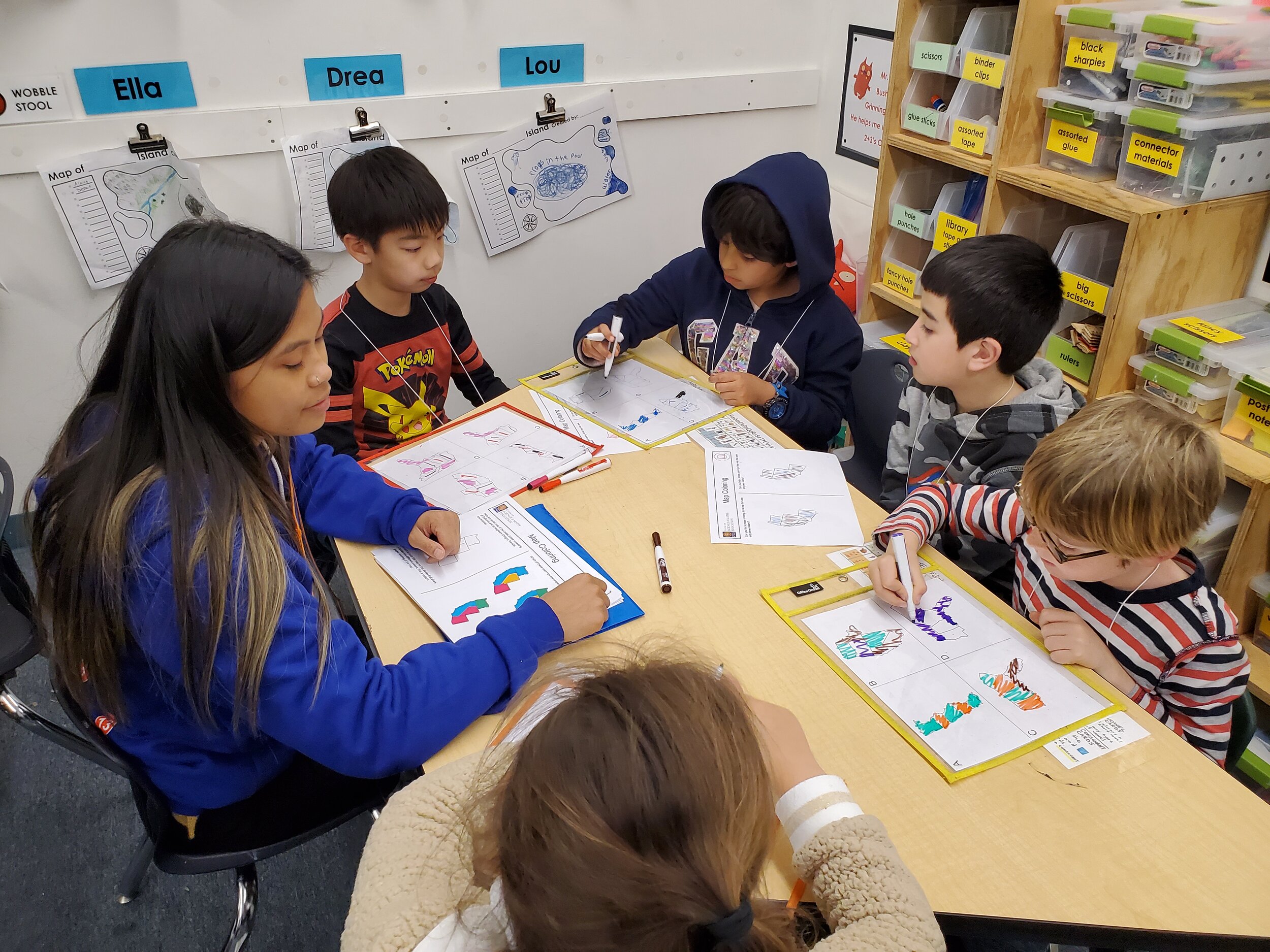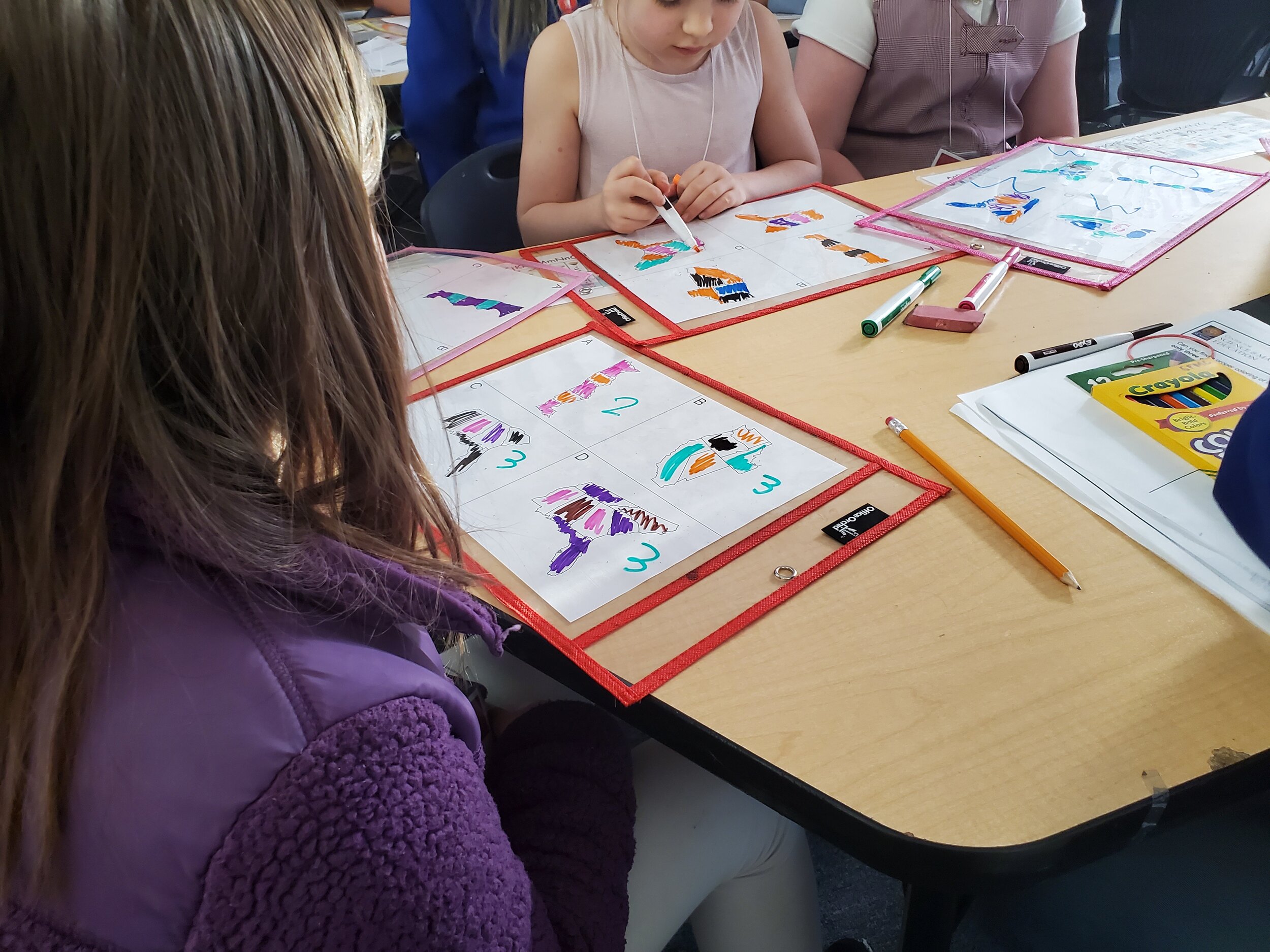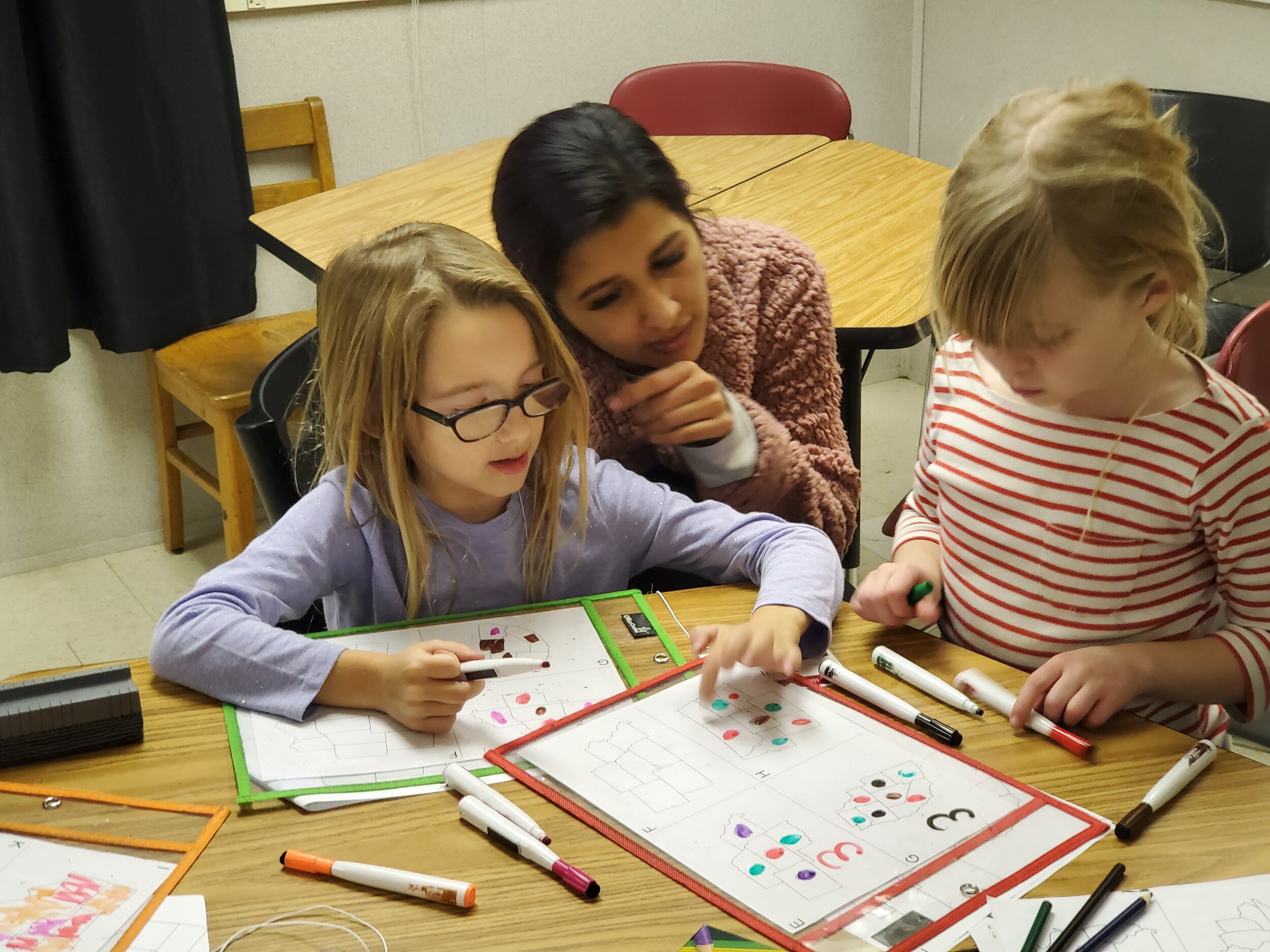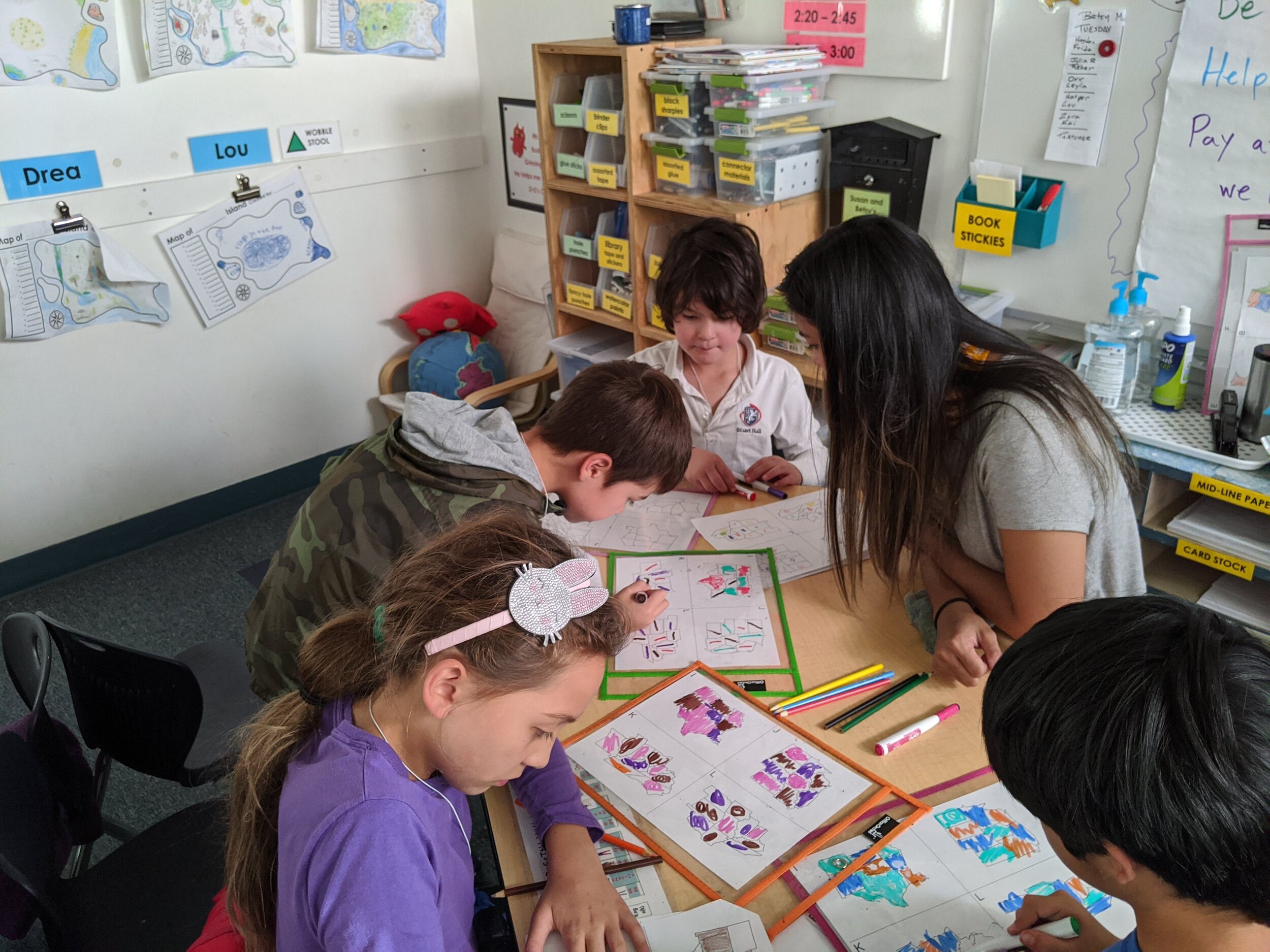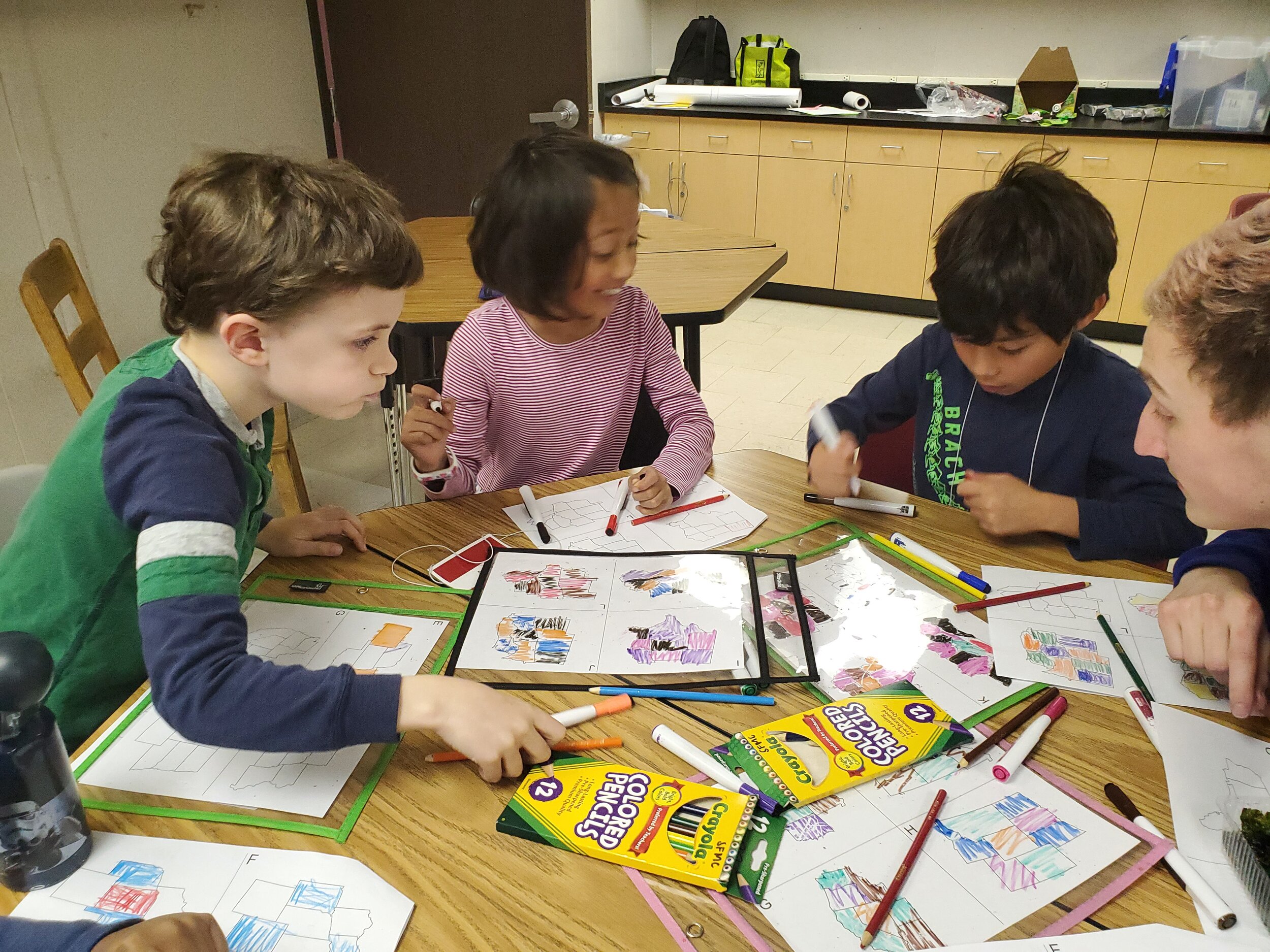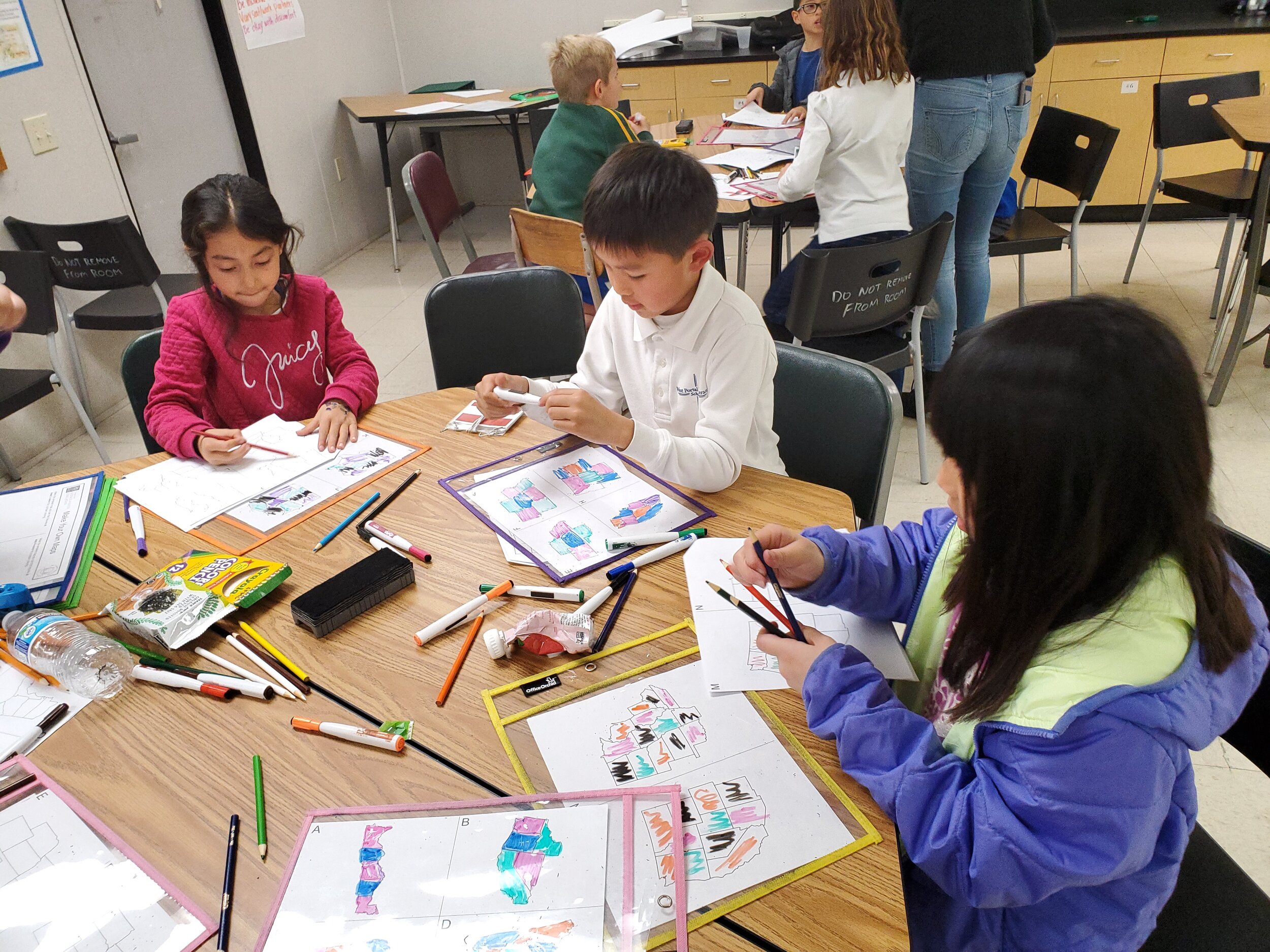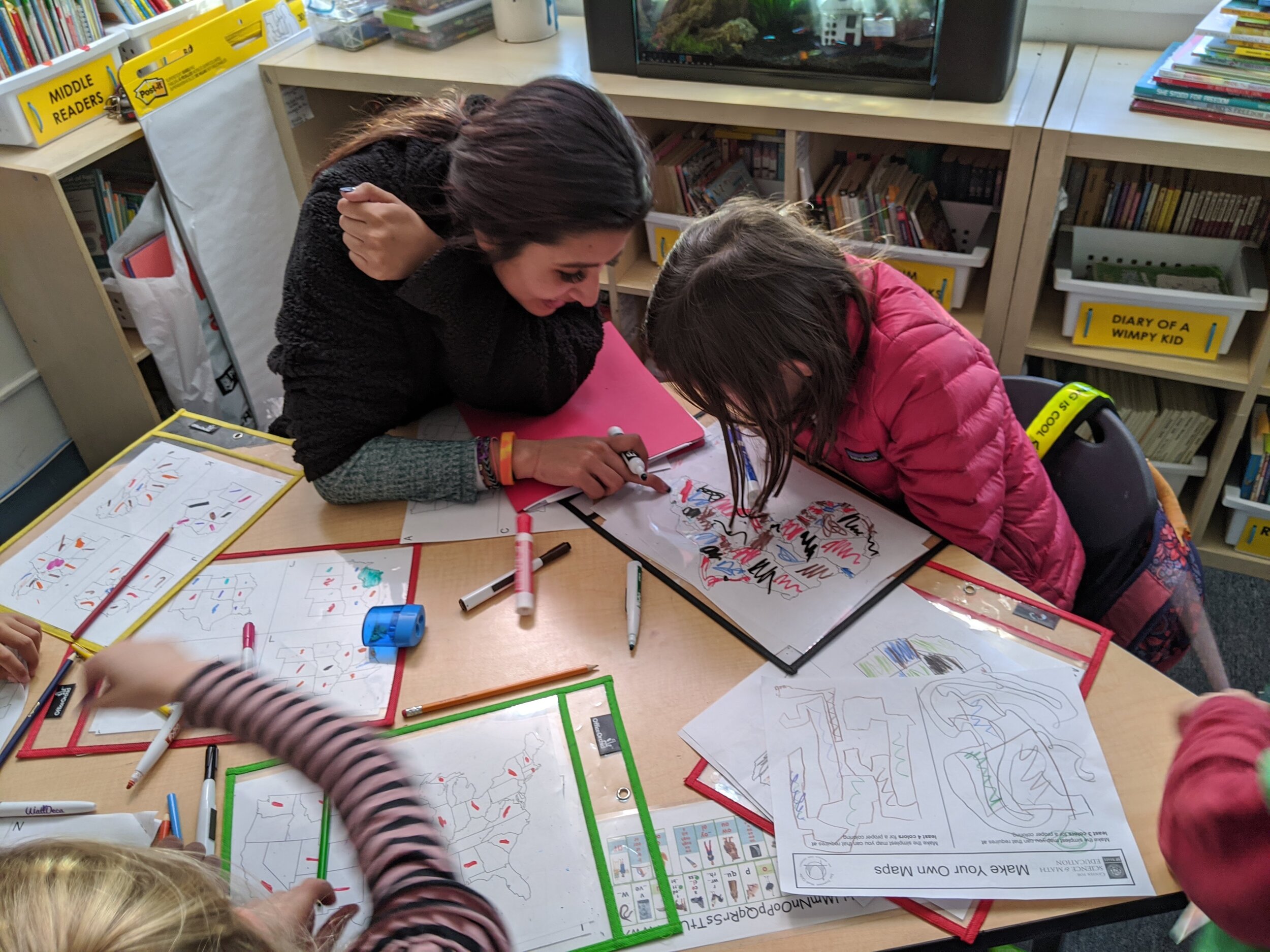Map Coloring
How it works
Imagine you are given a map and you want to color the states or countries so that whenever two states or countries share a border, they are different colors. (This is called a proper coloring.) What is the minimum number of colors you will have to use? What if you were coloring a map of the entire United States?
In this activity, students start by trying to find proper colorings for partial maps of the U.S. using as few colors as possible. Next, they try to design their own maps that require specific numbers of colors to properly color, and finally, they try to find proper colorings for various world maps (a map of the entire U.S. as well as maps of various continents) using as few colors as possible.
Map coloring challenges handout
Why we like this activity
It’s fun! Students enjoy coloring the maps, as well as trying to properly color them with as few colors as possible.
It helps students develop algorithmic reasoning.
It requires students to engage in mathematical habits of mind:
- Finding and using strategies to properly color maps using as few colors as possible.
- Understanding and explaining why a given map can’t be properly colored using fewer than a given number of colors.
- Finding and using strategies to design maps that require a specific number of colors to properly color.
- It has a low floor and a high ceiling: Students can get started coloring maps by trial and error, but as the number of states or countries in a map increases, it’s useful to think more strategically.


